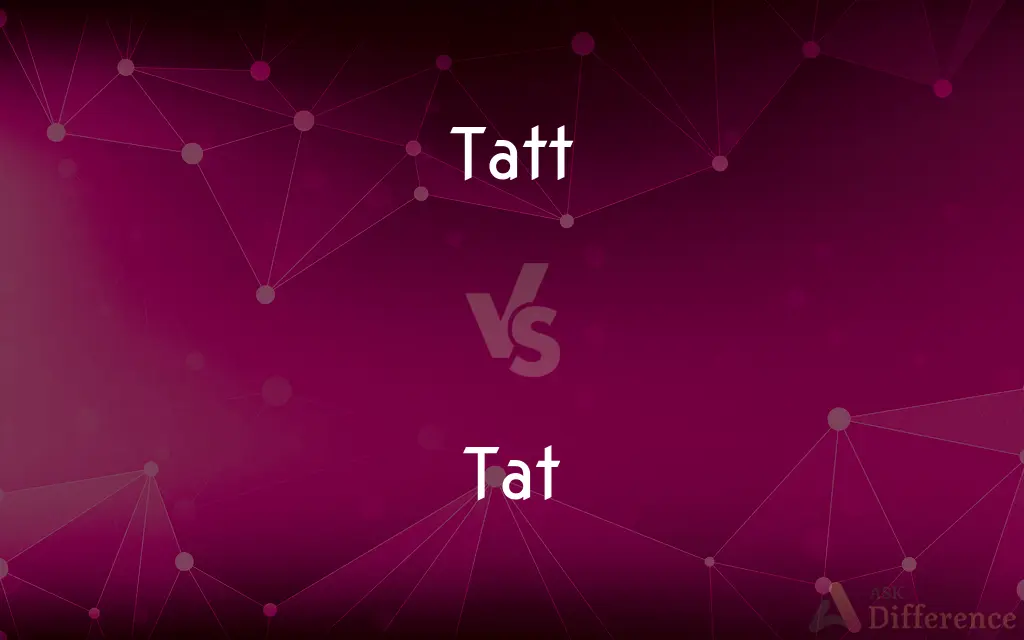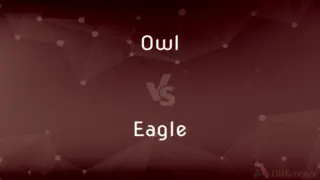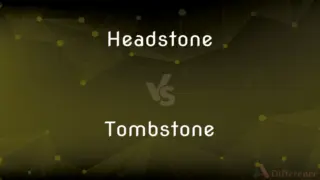Tatt vs. Tat — What's the Difference?
By Tayyaba Rehman & Urooj Arif — Updated on March 4, 2024
Tatt refers to rags or shabby clothes, emphasizing a state of disrepair, while tat is a slang term for tattoo, denoting body art. Both highlight distinct forms of personal expression.

Difference Between Tatt and Tat
Table of Contents
ADVERTISEMENT
Key Differences
Tatt often denotes old, worn-out clothing or fabric, symbolizing neglect or poverty. This term evokes images of discarded textiles and a lack of care. On the other hand, tat is colloquially used to refer to tattoos, showcasing a form of personal or cultural expression through body art. Tattoos can signify identity, beliefs, or membership in a group.
While tatt conveys a negative connotation related to material condition, tat represents an artistic or personal statement. Tattoos are often carefully chosen for their aesthetic or symbolic value, contrasting with the involuntary status that tatt implies about someone's possessions.
Tatt can also imply valuelessness or something that is no longer of use, suggesting an item that has been cast aside. Meanwhile, tat, as a form of body art, is seen as an investment in one's appearance or a permanent accessory, carrying significant personal or emotional value.
The use of tatt and tat also differs in social contexts. Tatt is often used in a derogatory manner, indicating someone's lack of wealth or care for their belongings. Conversely, tat, despite some societal stigmas, is increasingly recognized as a form of art and self-expression, gaining acceptance across various social groups.
Comparison Chart
Meaning
Old, worn-out clothing or fabric
Slang for tattoo
ADVERTISEMENT
Connotation
Negative, implying neglect or poverty
Generally positive, related to personal expression
Representation
Lack of care or poverty
Artistic or personal statement
Value
Suggests something valueless or discarded
Considered an investment or permanent accessory
Social Context
Often derogatory, linked to material condition
Increasing acceptance as art and self-expression
Compare with Definitions
Tatt
Old and worn-out clothing.
She cleared out all the tatt from her wardrobe during spring cleaning.
Tat
Slang for a tattoo.
She showed off her new tat at the party.
Tatt
Fabric scraps or rags.
The artist used tatt to create a stunning collage.
Tat
Body art as a form of expression.
She uses tats to tell her life story.
Tatt
Discarded or neglected textiles.
He donated a bag full of tatt to the shelter.
Tat
A permanent design on the skin.
His arm was covered in intricate tats.
Tatt
Items of little to no value.
The market stall was filled with all sorts of tatt.
Tat
Symbol of identity or belief.
The tat on his chest represents his heritage.
Tatt
Derogatory term for poor quality items.
I refuse to wear tatt that falls apart after one wash.
Tat
Investment in personal appearance.
He considered each tat an investment in his personal narrative.
Tatt
To make (anything) by tatting; to work at tatting; as, tatted edging.
Tat
To tattoo.
Tat
A mark or design made on the skin; a tattoo.
Common Curiosities
Is there a social stigma associated with tatt?
Yes, tatt can have a negative connotation, indicating a lack of wealth or care for one's belongings.
What is a tat?
Tat is slang for a tattoo, a permanent design inked on the skin as a form of personal or cultural expression.
How is tat perceived in society?
While tat may carry some stigma, it is increasingly accepted as a form of art and self-expression.
What does tatt refer to?
Tatt refers to old, worn-out clothing or fabric, often indicating neglect or poverty.
Are tatts considered valuable?
Tatts are generally considered of little to no value, often associated with discarded or neglected items.
Can tats have personal significance?
Yes, tats often carry significant personal, emotional, or cultural significance for the individual.
What are common reasons for getting a tat?
Common reasons include personal expression, art appreciation, commemoration, and identity or group membership.
Can tatt refer to anything other than clothing?
Yes, tatt can also refer to any items of little to no value, not just clothing.
Is tatt always negative?
While typically negative, the context can vary, and it sometimes refers to objects in a neutral or descriptive way.
How does the value of tatt compare to tat?
Tatt is often seen as valueless or discarded, whereas tat is viewed as an investment or meaningful accessory.
Can tat be removed?
Yes, though tat is permanent, it can be removed through laser treatments, albeit with difficulty and potential scarring.
Is it common to collect tatt?
Collecting tatt is not common due to its association with valuelessness and discard.
Can tatt be repurposed or reused?
Yes, tatt can be creatively repurposed or recycled, though it is often associated with discard and neglect.
How do people choose their tats?
Choices can be based on aesthetic preference, symbolic meaning, or emotional significance.
Do all cultures accept tat?
Acceptance varies widely across cultures, with some embracing it as art and others viewing it with skepticism or disapproval.
Share Your Discovery

Previous Comparison
Owl vs. Eagle
Next Comparison
Headstone vs. TombstoneAuthor Spotlight
Written by
Tayyaba RehmanTayyaba Rehman is a distinguished writer, currently serving as a primary contributor to askdifference.com. As a researcher in semantics and etymology, Tayyaba's passion for the complexity of languages and their distinctions has found a perfect home on the platform. Tayyaba delves into the intricacies of language, distinguishing between commonly confused words and phrases, thereby providing clarity for readers worldwide.
Co-written by
Urooj ArifUrooj is a skilled content writer at Ask Difference, known for her exceptional ability to simplify complex topics into engaging and informative content. With a passion for research and a flair for clear, concise writing, she consistently delivers articles that resonate with our diverse audience.














































